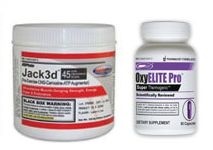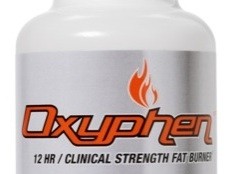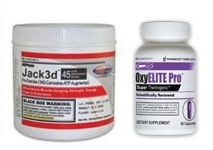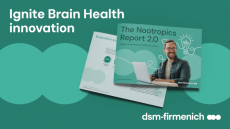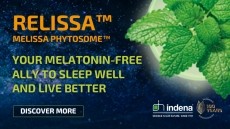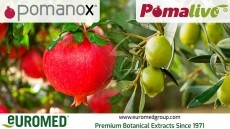DMAA: Only found in select geranium, says new USPLabs-funded study

The study, published in Analytical Chemistry Insights, claims to explain why DMAA has been reportedly found in certain samples from China, and not in geranium samples from other regions such as India, Mississippi, France, Egypt and New Zealand.
“Until now, none of the samples analyzed have been identical or reported as from the same region,” wrote the researchers, led by Paul Simone.
“Thus, regional environmental variations could explain the presence of 1,3-DMAA in the Changzhou S11, Changzhou March 2012, and Changzhou May 2012 samples and the absence of 1,3-DMAA concentrations in Kunming and Guiyang geranium samples reported here, [and samples reported elsewhere].”
USPLabs funded a study by Intertek AAC Labs published in August that also reported the detection of DMAA has been detected in Chinese geranium. That study was also published in Analytical Chemistry Insights.
DMAA
DMAA (1,3-Dimethylamylamine, also known as methyl hexaneamine (MHA), and several other names) has rarely been out of the headlines in recent months since FDA issued warning letters to 10 manufacturers and distributors of supplements containing DMAA.
There has been intense debate about whether DMAA, which was first manufactured synthetically by drug giant Eli Lily in the 1940s, is in fact a constituent of geranium.
According to a single analysis by Chinese researchers reportedly using gas chromatography-mass spectrometry (GC-MS) techniques and published in the Journal of Guizhou Institute of Technology (1996, Vol. 25, pp. 82-85) – ‘The Ping Paper’ – DMAA is a constituent of geranium oil, but no other published analysis has reported its presence… until now.
'Confirming' DMAA's presence
Commenting on the new analysis, Kerri Toloczko, spokesperson for USPLabs – the company behind best-selling Jack3d supplement containing DMAA – told NutraIngredients-USA: “This study represents another peer-reviewed analytical study confirming the presence of DMAA in geranium.”
A video of the lead scientiest explaining the study thoroughly is also available by clicking here: http://www.la-press.com/analysis-and-confirmation-of-13-dmaa-and-14-dmaa-in-geranium-plants-us-article-a3413
Now you see it, now you don’t
In contrast to the Memphis and Intertek analyses, there have been two other analyses published in recent months that showed that DMAA was not present in geranium. An analysis published in the Journal of Analytical Toxicology in June was described as a ‘comprehensive’ and ‘robust’ by respected members of the industry.
Scientists from ElSohly Laboratories, Inc. (ELI), Phyto Chemical Services, Inc. (PSI), the National Center for Natural Products Research, The University of Mississippi, and the US Anti- Doping Agency (USADA) reported that gas chromatography–mass spectrometry (GC-MS) and liquid chromatography–tandem mass spectrometry (LC–MS-MS) analysis of geranium oils or young and mature, fresh and dried leaves and stems found no detectable levels of DMAA.
The scientists further confirmed the results using liquid chromatography–high-resolution mass spectrometry (high resolution LC–QTOF-MS).
This was followed by an analysis published in Drug Testing and Analysis by Dr Dan Armstrong et al at the University of Texas, Arlington which concluded that: “It appears unlikely that the DMAA in supplements originates from natural sources such as geranium oils for three reasons: The DMAA extracted from these supplement products had diastereomeric ratios that were indistinguishable from the synthetic DMAA standards; they are all racemic; and no DMAA was detected at a level of ≥10 ppb in any of the 8 geranium oil samples.”
New analysis
According to the paper, the discrepancies in the literature may be due to regional and environmental considerations, argue the Memphis-based researchers.
Simone and his co-workers combined an extraction method with high performance liquid chromatography and tandem mass spectrometry to determine 1,3-DMAA and 1,4-dimethylamylamine (1,4-DMAA) in geranium plant samples from the Changzhou, Kunming, and Guiyang regions of China during both winter and summer.
The researchers reported that 1,3-DMAA and 1,4-DMAA was present in concentrations in the Changzhou geranium plants of China above the reported method detection limit (MDLs).
“The reported concentrations of 1,3-DMAA ranged from 68 to 496 ng/g and 1,4-DMAA ranged from 13 to 162 ng/g,” they said. “Similarly, 1,3-DMAA and 1,4-DMAA were not detected above the MDL in samples from Guiyang and Kunming regions.
“To the best of the authors’ knowledge, this is the first reported inter-laboratory analysis confirming the presence of 1,3-DMAA in a geranium plant (specifically Changzhou S11 sample).”
Multiple labs
Commenting on the discrepancies with results from other leading laboratories, the researchers suggests that a possible solution would be a “multiple laboratory and blind analysis of identical samples expected to have 1,3-DMAA (such as Changzhou region samples) as well as samples that are not expected to contain 1,3-DMAA.
“Using this approach, a satisfactory answer for the national regulatory agencies as well as the commercial interests could be provided.”
Source: Analytical Chemistry Insights
2012, Volume 7, Pages 59-78, doi: 10.4137/ACI.S10445
“Analysis and Confirmation of 1,3-DMAA and 1,4-DMAA in Geranium Plants Using High Performance Liquid Chromatography with Tandem Mass Spectrometry at ng/g Concentrations”
Authors: H.L. Fleming, P.L. Ranaivo, P.S. Simone
